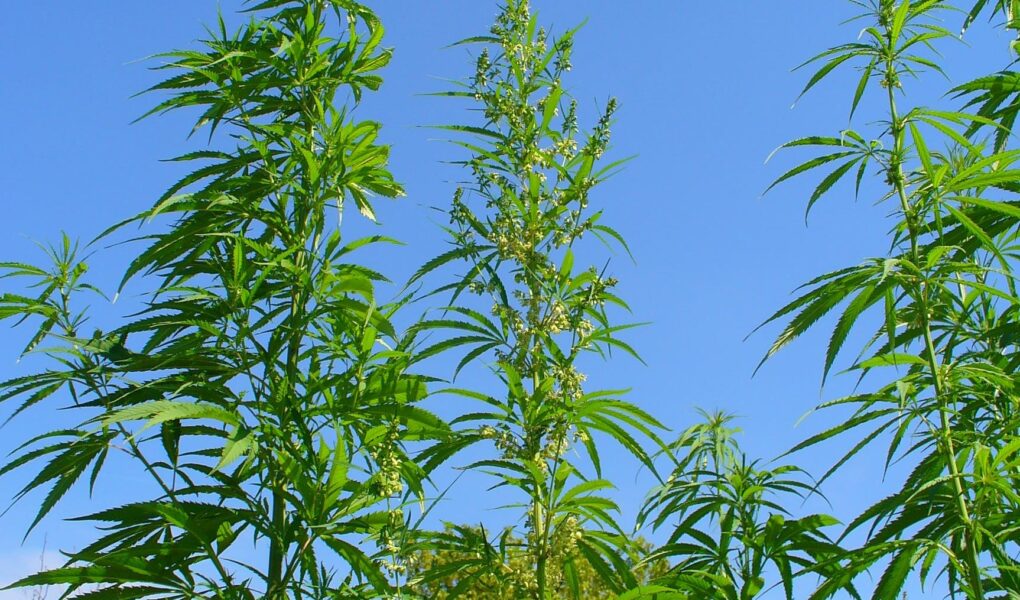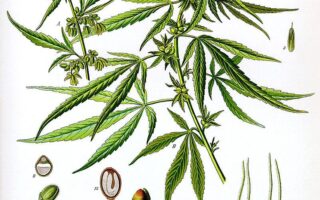In recent years, the world has witnessed a seismic shift in the perception of marijuana, shifting from a controversial substance synonymous with recreational use to a promising therapeutic agent in the realm of medicine. As research uncovers the intricate complexities of the cannabis plant, its diverse pharmacological properties are paving the way for innovative treatments across a spectrum of health conditions. From alleviating chronic pain and reducing anxiety to easing the symptoms of epilepsy and multiple sclerosis, the medicinal potential of marijuana has sparked both interest and debate among healthcare professionals, patients, and policymakers alike. This article delves into the evolving landscape of marijuana’s medical uses, shedding light on its mechanisms, benefits, and the ongoing discourse surrounding its acceptance in mainstream medicine. Join us as we explore the delicate balance between tradition and science, revealing how this ancient plant is finding its place in modern medicine.
Table of Contents
- Exploring the Therapeutic Potential of Cannabis in Pain Management
- Harnessing Cannabinoids: A Guide to Relieving Anxiety and Stress
- Unlocking the Role of Medical Marijuana in Chronic Illness Management
- Navigating Treatment Options: Recommendations for Patients and Providers
- Q&A
- Key Takeaways
Exploring the Therapeutic Potential of Cannabis in Pain Management
As interest in alternative therapies grows, the application of cannabis as a potential pain management tool has become a focal point of research and patient exploration. Many advocates suggest that the active compounds in cannabis, particularly cannabinoids like THC and CBD, may offer relief by interacting with the body’s endocannabinoid system, which plays a crucial role in regulating pain and inflammation. Studies highlight that patients suffering from conditions such as chronic pain, arthritis, and migraines have reported significant improvements in their quality of life through the use of medical cannabis.
The therapeutic effects can vary greatly depending on the type of cannabis product used, the method of consumption, and the individual patient’s condition. Common ways to administer cannabis for pain relief include:
- Inhalation: Quick onset of effects via smoking or vaporizing.
- Edibles: Long-lasting relief but delayed onset, as they must be processed through the digestive system.
- Tinctures: Fast-acting and allow for precise dosing.
- Topicals: Direct application to affected areas for localized relief.
As various states and countries continue to legalize medical cannabis, a growing body of research aims to substantiate its effectiveness and safety in pain management. Here’s a simplified overview of the key cannabinoids and their potential applications:
| Cannabinoid | Potential Benefits | Common Use |
|---|---|---|
| THC | Analgesic, anti-inflammatory | Chronic pain, neuropathic pain |
| CBD | Anti-inflammatory, anxiolytic | Migraines, arthritis |
| CBC | Anti-inflammatory, antidepressant | General pain relief |
| CBG | Anti-inflammatory, analgesic | Post-operative pain relief |
Harnessing Cannabinoids: A Guide to Relieving Anxiety and Stress
In recent years, the therapeutic potential of cannabinoids has drawn increasing attention, particularly for those grappling with anxiety and stress. Cannabinoids, the active chemical compounds found in cannabis, interact with the body’s endocannabinoid system to help balance mood and promote a sense of calm. Cannabidiol (CBD), a non-psychoactive component, is particularly celebrated for its anxiolytic properties. As users report, incorporating CBD oil or edibles into their routines can lead to noticeable reductions in anxiety levels—allowing for improved relaxation without the altered state of mind typically associated with THC.
Here are a few key cannabinoids that have demonstrated efficacy in alleviating anxiety and stress:
- THC (Tetrahydrocannabinol): The psychoactive component can provide immediate relief but should be used cautiously due to potential side effects in some individuals.
- CBD (Cannabidiol): Known for its calming effects, it can be taken in oil form, capsules, or infused into food and beverages.
- CBC (Cannabichromene): Emerging research suggests it also contributes to reducing anxiety and promoting mood enhancement.
- CBG (Cannabigerol): Known for its potential neuroprotective properties, it may also play a role in anxiety management.
| Cannabinoid | Effects |
|---|---|
| CBD | Calming, non-psychoactive, may reduce anxiety |
| THC | Potentially euphoric, may improve mood but can induce anxiety in some |
| CBC | May enhance mood and alleviate anxiety |
| CBG | Possible neuroprotective effects, anxiety reduction |
Unlocking the Role of Medical Marijuana in Chronic Illness Management
For many individuals grappling with chronic illnesses, traditional medications may not provide adequate relief or may come with significant side effects. In such cases, medical marijuana is emerging as a promising alternative, offering a holistic approach to pain management and symptom relief. Patients have reported improvements in various conditions including chronic pain, anxiety, nausea, and inflammation. The compounds found in marijuana, specifically cannabinoids like THC and CBD, interact with the body’s endocannabinoid system to alleviate discomfort and promote a sense of well-being.
Furthermore, the versatility of medical marijuana allows it to be administered in various forms—each with unique benefits. Options such as edibles, oils, tinctures, and topicals cater to different preferences and medical needs, making it easier for patients to incorporate cannabis into their treatment plans. Here’s a brief overview of how these forms can be effectively utilized:
| Form | Benefits |
|---|---|
| Edibles | Long-lasting relief, discreet use |
| Oils | Immediate effects, easy dosing |
| Tinctures | Versatile application, fast absorption |
| Topicals | Localized treatment, non-psychoactive |
Navigating Treatment Options: Recommendations for Patients and Providers
When considering medical marijuana as a treatment option, both patients and providers should engage in open, informed discussions to explore its applicability and benefits. It is essential to evaluate various factors including patient history, specific medical conditions, and potential interactions with existing medications. Providers can guide patients by:
- Assessing the individual’s eligibility for medical marijuana based on state regulations.
- Providing information on appropriate dosages and methods of consumption, such as oils, edibles, and vaporizers.
- Discussing potential side effects and monitoring responses to treatment.
Reviewing recent research and developing a personalized treatment plan can empower patients and enhance their well-being.
The variety of marijuana strains and formulations available further complicates the treatment landscape. Patients should consider the following options based on their needs:
- THC-Dominant Strains: Often utilized for pain relief and appetite stimulation.
- CBD-Dominant Strains: Generally preferred for reducing anxiety and inflammation without psychoactive effects.
- Hybrid Strains: A balanced option that provides a mix of THC and CBD, catering to both relaxation and therapeutic effects.
Additionally, incorporating a straightforward table can aid in comparing different strains and their uses:
| Strain Type | Primary Benefits | Typical Use Cases |
|---|---|---|
| THC-Dominant | Pain relief, Euphoria | Chronic pain, Cancer treatment |
| CBD-Dominant | Anxiety relief, Inflammation reduction | Seizures, PTSD |
| Hybrid | Balance of effects | General wellness, Mood stabilization |
Q&A
Q&A: Exploring the Medical Uses of Marijuana
Q1: What are some of the primary medical uses of marijuana?
A1: Marijuana has garnered attention for its potential medical applications, which include pain relief, anxiety reduction, muscle spasm alleviation, and appetite stimulation. Conditions such as chronic pain, multiple sclerosis, cancer treatment effects, and post-traumatic stress disorder (PTSD) have been notable areas where medical marijuana may offer benefits.
Q2: How does marijuana work in the body to provide these effects?
A2: The active compounds in marijuana, primarily cannabinoids like THC (tetrahydrocannabinol) and CBD (cannabidiol), interact with the body’s endocannabinoid system. This system plays a crucial role in regulating pain, mood, appetite, and other physiological processes. By binding to receptors in this system, cannabinoids can help modify the perception of pain and improve overall well-being.
Q3: What conditions have shown the most promising results with medical marijuana?
A3: Research indicates that medical marijuana may be particularly effective for chronic pain from various sources, chemotherapy-induced nausea, and spasticity related to multiple sclerosis. Additionally, some studies suggest improvements in symptoms for individuals with epilepsy and PTSD, although more extensive research is needed to confirm these benefits.
Q4: Are there any side effects associated with medical marijuana use?
A4: Like any medication, medical marijuana can have side effects. Commonly reported effects include dizziness, dry mouth, altered mental state, and fatigue. It’s essential for patients to discuss their medical history and any potential risks with a healthcare professional before starting treatment.
Q5: What forms of medical marijuana are available to patients?
A5: Medical marijuana is available in various forms, including dried flower, oils, edibles, and tinctures. Each form has different onset times and durations of effects, allowing patients to choose an option that best fits their lifestyle and treatment goals.
Q6: Is medical marijuana legally approved everywhere?
A6: Legal status varies widely by country and region. In many places, medical marijuana is approved for specific conditions, while in others it remains strictly prohibited. It’s crucial for patients to be aware of their local laws and regulations regarding medical marijuana use.
Q7: How can patients obtain a prescription for medical marijuana?
A7: The process typically involves a consultation with a licensed healthcare provider who is knowledgeable about medical marijuana. The provider will assess the patient’s condition and determine if they qualify for medical cannabis treatment, often requiring documentation of a relevant medical history or diagnosis.
Q8: What does the future hold for medical marijuana research?
A8: The future of medical marijuana research looks promising, with ongoing studies aimed at better understanding its therapeutic potential and mechanisms. As societal attitudes evolve and regulations become more permissive, the scientific community hopes to uncover more about who can benefit from marijuana-based treatments and how to optimize their use safely and effectively.
while there is growing support for the medical uses of marijuana, patients should always engage with healthcare professionals to ensure informed and safe usage tailored to their specific health needs.
Key Takeaways
As we draw the curtains on our exploration of marijuana’s medical uses, it’s clear that the conversation extends far beyond the smoky haze often associated with this plant. From alleviating chronic pain to soothing anxiety and even supporting conditions like epilepsy, the potential benefits of medical marijuana are profound and multifaceted. Each patient’s journey is unique, and while research continues to unfold, this ancient herb stands at the intersection of tradition and modern science.
As we look to the future, it’s essential to remain open-minded and well-informed. Whether you’re a patient considering cannabis as a treatment option or simply an interested observer, the evolving landscape of medical marijuana invites us to question, learn, and engage in constructive dialogue. Ultimately, the story of medicinal cannabis is still being written—full of discoveries waiting to be made, perspectives to be valued, and lives to be transformed. As we part ways, may your understanding of this complex topic deepen, encouraging further inquiry into the spectrum of healing that nature has to offer.


